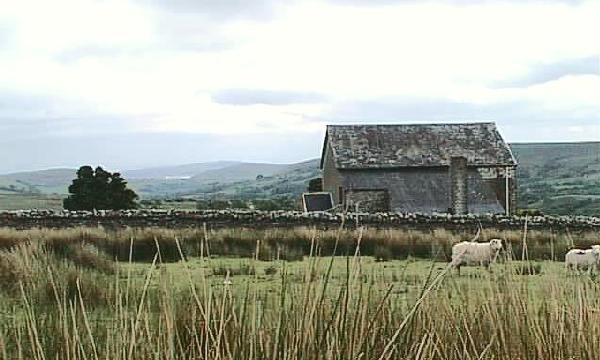| The Baran Pennsylvania Connection
In 1831 the congregation of Baran Chapel, Llangyfelach was severely depleted after approximately fifty members left Wales to join a growing agricultural community of Welsh settlers in Bradford County, Pennsylvania. Aboard the Brig, Elizabeth Clark, they arrived in New York on 5th November 1831 and travelled via the Delaware and Hudson Canal to Honesdale, Pennsylvania. Here, they were met by men with horses and sleighs, who drove them to their new home in the Endless mountains region of northeast Pennsylvania.
Although some pioneers had settled in the area as early as the 1780s, the first Welsh farmers arrived in 1824. Others followed and the settlement slowly developed around an area that was originally dense forest. In 1828 a Welshman called David Williams joined the community. In 1831 he went home to Wales and returned with the party from Baran chapel, which included his widowed mother and two brothers. Many of the new immigrants settled in the Bradford townships of Pike and Warren, while a few others made their homes in Middleton township in the neighbouring county of Susquehanna, Pennsylvania. The Welsh Settlement, as they came to be described, established a church at Pike, under their minister, Rev. Daniel Jones of Pentwyn farm, Llangiwg. In 1870, when a Post Office was established in the vicinity of East Pike/South Warren, this area became known as Neath.
A rebuilt church still exists at Neath and along with the names in the township’s graveyard is evidence of this early Welsh community. They integrated with other nationalities, fought in the American Civil War, and some, along with their descendents, went on to forge prestigious careers and make their mark on America's history:
- William T. Davies (1831-1912) was elected District Attorney in 1865. He also served as a Republican State Senator during 2 terms of office, 1876-1884 and was the Lieutenant Governor of Pennsylvania from 1887-1891.
- Evan William Evans (1828-1874) attended Yale University and became the first professor of mathematics at Cornell University, New York.
- Alice Catherine Evans (1881-1975) worked for the US Department of Agriculture where she identified the bacterial infection in cows (later known as brucellosis) that caused undulant fever in humans. She was later elected the first woman president of the American Society of Bacteriologists.
- Norman Thomas (1884-1968) studied at Princeton and ran six times as a Presidential candidate for the minority American Socialist Party during the period 1928-1948.
|
 Name: Baran Chapel
Name: Baran Chapel